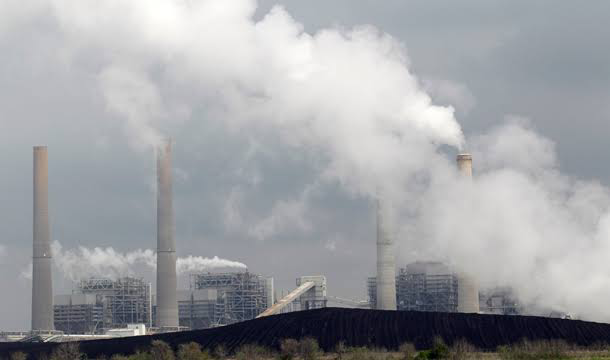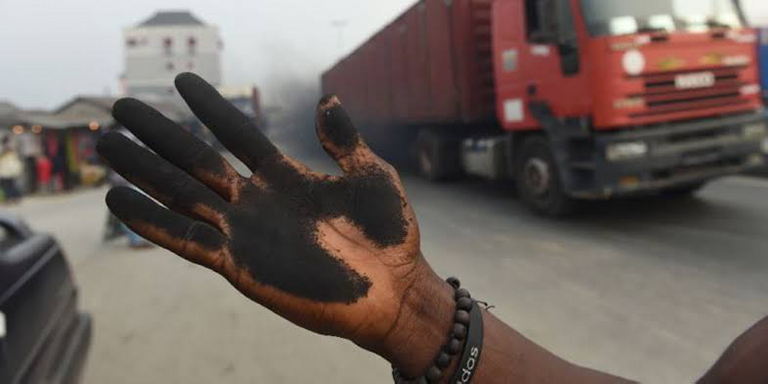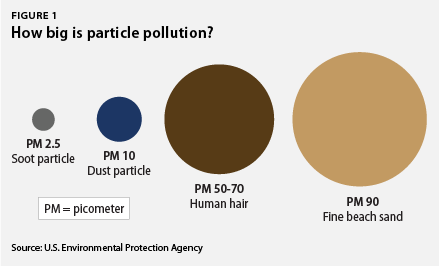The Deadly Nature of Soots to Human Health and the Environment: Millions are Dieing Due to Particle Pollution, What can we do?
The nature of environmental degradation on human health is very overwhelming. Mostly the ones that comes from industrial waste and carbon.
Industrialization has brought good to human lives as well as harm to human lives in general. At first people all over the world were happy about the industrial revolution but little did they know that it'll affect and endanger human lives.
Today's post will focus on soot and it's implications on human health. People all over the world have died and are hospitalized due to inhaling gas and other pollutants and the implications is enormous. Before we transcend into the topic of the day proper, lets look at what soot is.
What is soot?
Soot is the common term for a type of particle pollution called PM 2.5—particulate matter that is 2.5 micrometers in diameter or smaller. Such fine particles are even smaller than dust and mold particles, or approximately 1/30 of the size of a human hair.
https://www.americanprogress.org/article/soot-pollution-101/
It is comprised of a variety of pollutants, including chemicals, acids, metals, soils, and dust, which are suspended in the air after emission. Soot can come in solid, liquid, or gaseous (“aerosols”) states.Source
It's very difficult for one to control what he or she inhales into the body system because of the open nature of the nostrils. Inhaling gas and other chemicals is inevitable for mankind.
Does it mean that mankind is doomed? Or is there hope for mankind regarding to what he inhales? The solution to this is the reduction of gas flaring in our day to day industrial activities and embrace greenhouse gases that are friendly to mankind and the environment.
Today, automobile industries are moving from diesel and petrol engine cars to the production of electric and hydrogen peroxide to reduce the effect of carbon and chlorofluorocarbons pollution into the environment.
How is soot produced?
Soot is a byproduct of burning fossil fuels, particularly coal. It is emitted by a variety of sources, including burning coal for electricity or industrial fuel, manufacturing, oil refining, and motor vehicles.
https://www.americanprogress.org/article/soot-pollution-101/
In practical terms in Port Harcourt City, Nigeria where I reside, we experience black soot in the air on a daily basis. These pollutants are emitted from the Multinational corporations around the area as well as bunkering activities.
Soots and it's Implications on Human Health
Soot poses tremendous harms to public health, particularly because of its size. Particulate matter is so small that it can easily enter your lungs and bloodstream, potentially causing damage in a number of ways.Source
Like it's been mentioned above that the soots are very dangerous to humans due to their sizes and they go into the human body through breathing. It's a true fact that no human being can live without breathing so the implications are enormous. Soots goes directly into the lungs and is mixed with the liquid content of the body and moves alongside the liquid into the bloodstream. Once this is done it causes number of diseases which include:
respiratory tract infections. Soot or Carbon Black toxicity causes the interruption of respiratory process by alteration in lung functions.
The two respiratory diseases that are mainly reported in humans due to soot exposure are chronic obstructive pulmonary disease (COPD) and asthma. The pathophysiology of asthma involves the inflammation of airways, tissue remodeling and fibrosis, obstruction of airflow intermittently, and hyper responsiveness of bronchi.Sourceit can also increase the chances of one having cancer.
cardiovascular dysfunctions.
Finally, since industrial activities can not be stop completely in industrialized nations but can gradually be reduced if put into long term plans, for instance, the UK have put in place legislation to ban fuel and diesel engine cars in 2032 to help reduce the devastating effects of Soots and other carbons on humans. The major challenge is put in a question form, what will happen to poor or low income countries who don't have the necessary income to reduce or completely manage the situation of Soots or Carbon Black from their environment?



Congratulations @inspiredbyhive! You have completed the following achievement on the Hive blockchain and have been rewarded with new badge(s):
Your next target is to reach 60 posts.
You can view your badges on your board and compare yourself to others in the Ranking
If you no longer want to receive notifications, reply to this comment with the word
STOPTo support your work, I also upvoted your post!
Check out the last post from @hivebuzz:
Support the HiveBuzz project. Vote for our proposal!
https://twitter.com/Halleluyahbass/status/1497754036669501442
The rewards earned on this comment will go directly to the person sharing the post on Twitter as long as they are registered with @poshtoken. Sign up at https://hiveposh.com.
thanks for shining the light on this issue.. pollution is destroying our planet.. and soot is i hope going to be a thing of the past one day.. when we transition to electric systems.. people complain about electric cars and totally forget about this terrible pollution problem
As we speak I'm working on oil spillage and aquatic lives that'll be published in less than 10 minutes. I hope it'll be helpful to the community.
Thanks once again